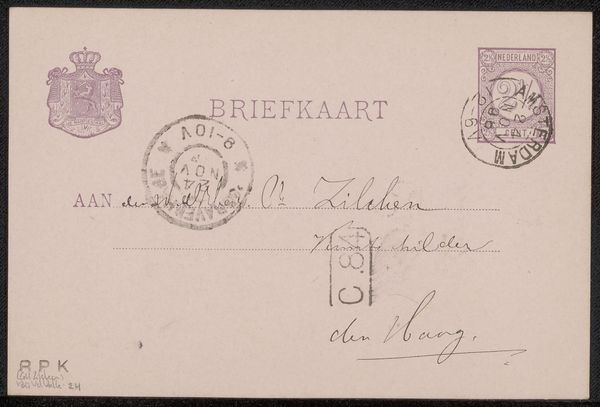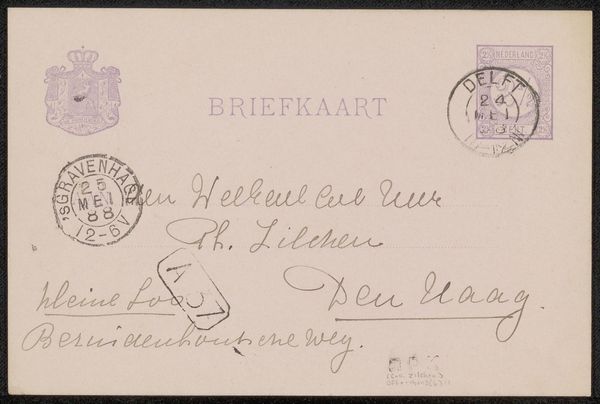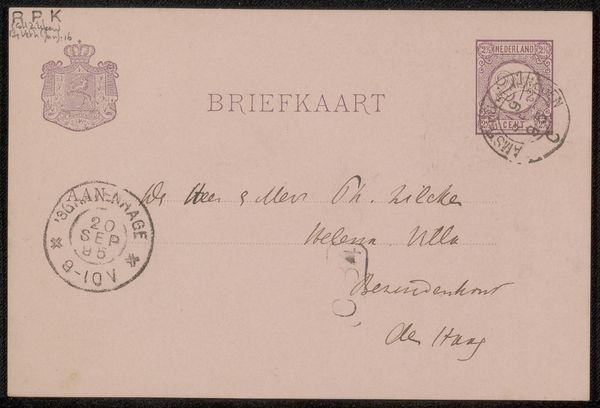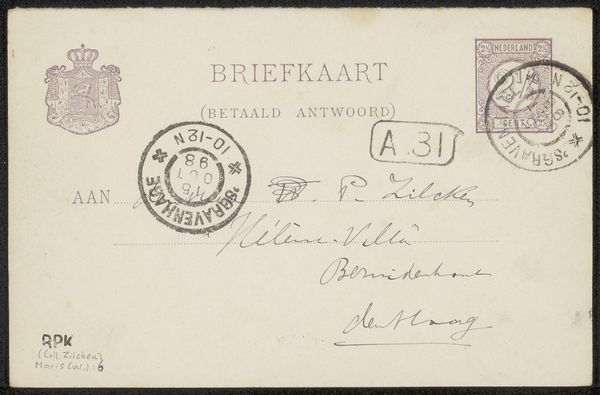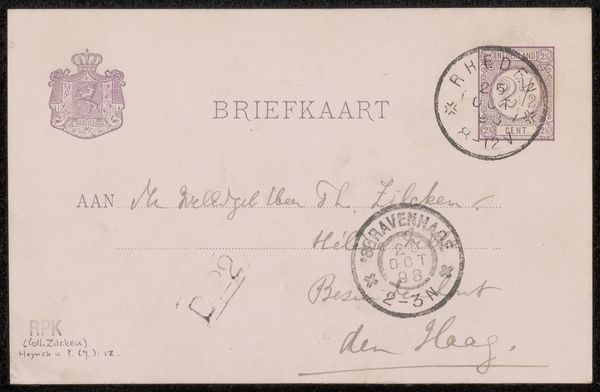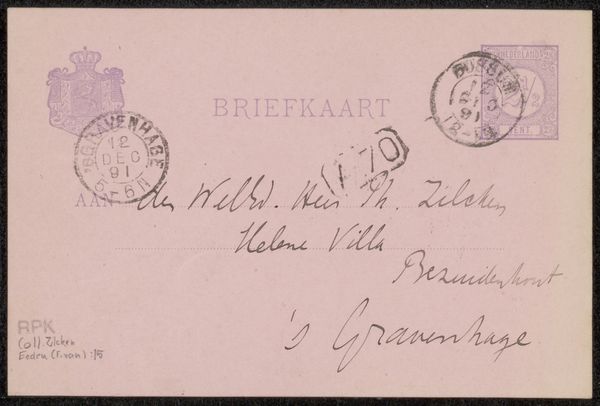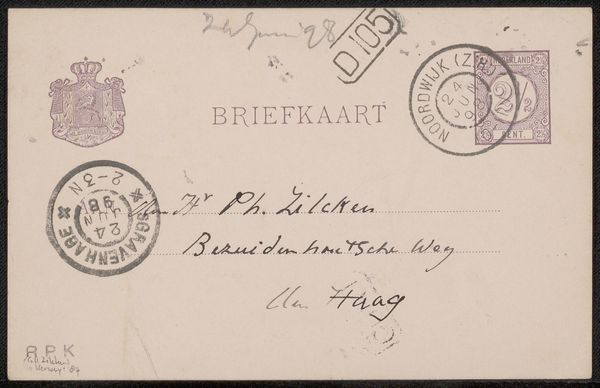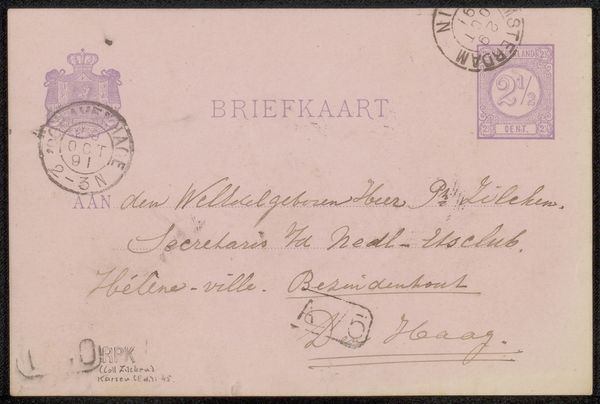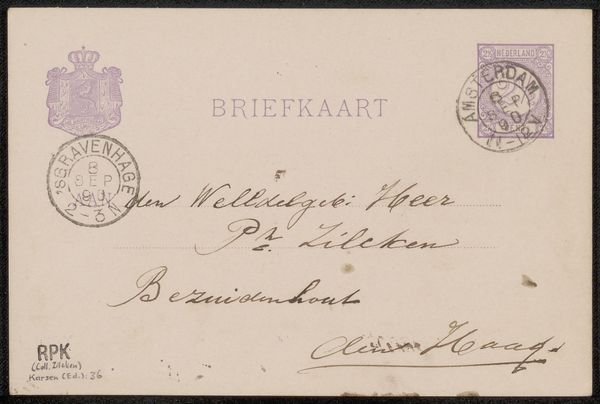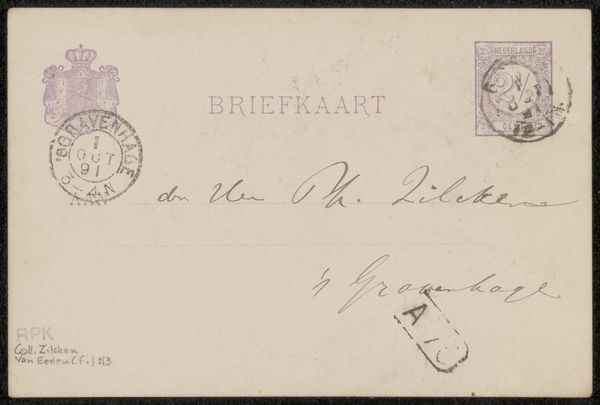
drawing, print, paper, ink
#
drawing
# print
#
paper
#
ink
Copyright: Rijks Museum: Open Domain
Curator: Oh, this is sweet – like a little visual whisper. It’s “Briefkaart aan Philip Zilcken” by Eduard Karsen. Made sometime before 1894. A humble postcard in ink on paper, yet it feels so intimate. Editor: Immediately, I'm struck by its formality, countered by what appears to be casual correspondence. "To the Esteemed Mr. Zilcken…" followed by what reads as a breezy check-in from The Hague. What social layers are at play here? Curator: The sepia tones speak of another era. It's that era where folks weren’t furiously typing and emailing – imagine putting ink to paper just to check on a friend! Did Zilcken save it for the beautiful script or for a sentimental attachment? You start wondering if he was more important than the image of the postcard leads you to believe… Editor: And we have the postal markings, almost like official stamps of a bygone administration! The Amsterdam and The Hague seals give it a tangible sense of place and time. It's a powerful example of how art can also be a historical document. Curator: Totally! It captures a snippet of a past, even an intimate glance into Karsen's daily life... I see the casual flourishes of the pen strokes like brushstrokes, almost impressionistic. There is real affection, that bleeds through despite the formal address. Editor: Perhaps we should consider how the conventions of letter-writing have historically been coded with gender, class, and power dynamics. Who gets to address whom in what tone reveals much about their relative social positions and that might give us clues as to the content that is missing… Curator: Mmm, maybe. And who is Mr Zilcken, though? Perhaps an artsy mentor? Or maybe even… Karsen's sweetheart! Ahh! Let’s create a narrative around their correspondence... This simple piece inspires speculation about the intersection of art and affection in everyday communication, no? Editor: Precisely! What's revealed through process -- choice of paper, type of script -- alongside content speaks to complex historical understanding of communication and community. Curator: Right, makes this everyday snapshot feel so much more powerful and loaded with nuance! It's the unseen aspects of their interactions, their correspondence that linger. Editor: Ultimately, an invitation to reimagine these lives and histories on our own terms.
Comments
No comments
Be the first to comment and join the conversation on the ultimate creative platform.

